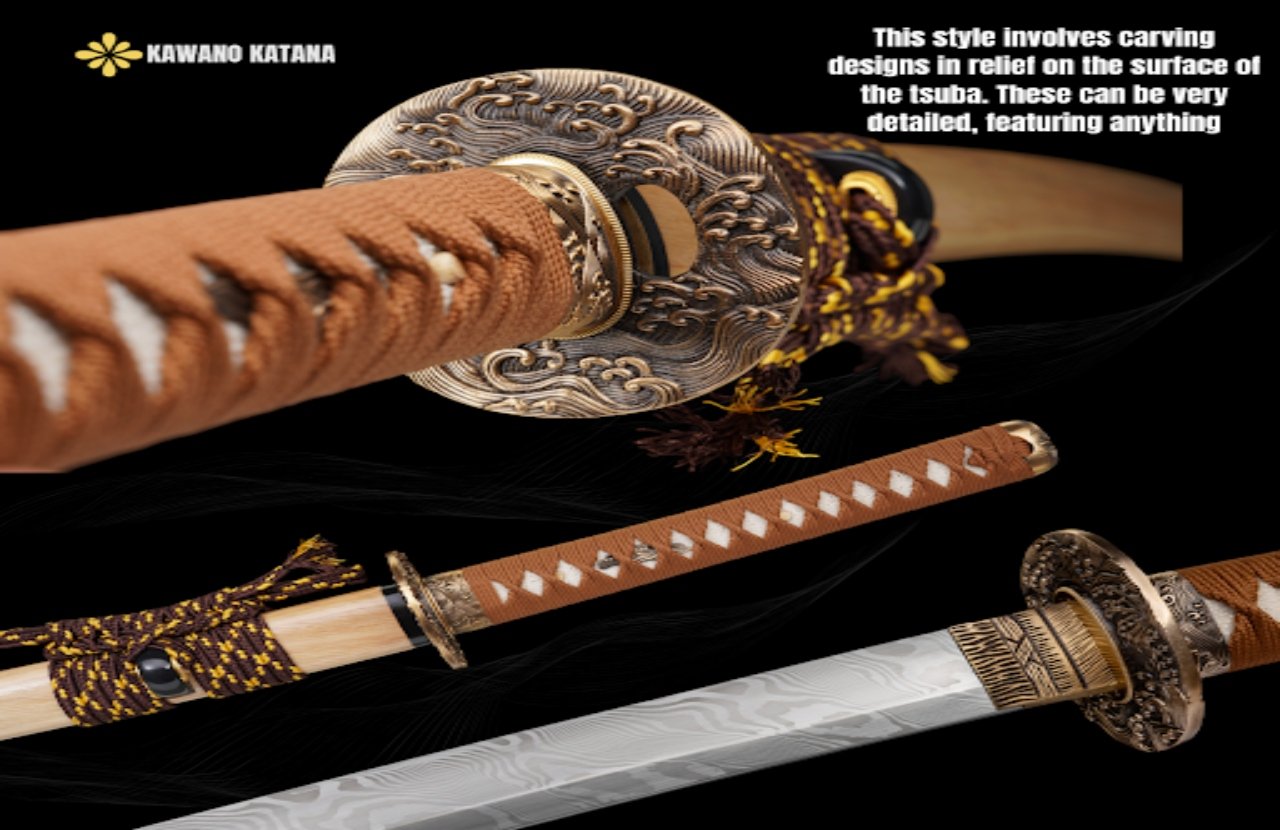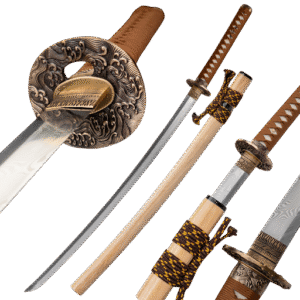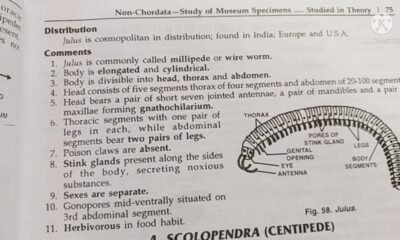Blog
Did the Double-Edged Katana Ever Exist?

The katana is a weapon that embodies a historical narrative, combining fire and steel with centuries of traditional Japanese practices. Its iconic curved, single-edged blade, full-tang construction, and distinctive circular guard are instantly recognizable symbols of the samurai and Japanese culture. It maintains its position as Japan’s most revered weapon. But what if the popular image of the katana isn’t the whole story?
The idea of a double-edged katana has captivated audiences for years, appearing in video games, anime, and movies. This has sparked a debate among history buffs, martial artists, and collectors: is the double-edged katana a historical fact or a work of fiction? This article will investigate the existence, purpose, and historical accuracy of these mysterious blades. We will explore the history of Japanese swords and uncover the truth behind this enduring myth.
The Forging of a Legend: Historical Context of the Katana
To understand the controversy surrounding the double-edged katana, we must first appreciate the evolution of traditional Japanese swords. The story of the katana is a journey of constant refinement. A quest for the perfect blade driven by the changing nature of warfare in feudal Japan.
The earliest Japanese swords, known as chokutō, were straight, single-edged blades heavily influenced by Chinese and Korean designs. These were primarily used for thrusting and were common during the Nara period (710-794). However, as warfare shifted from infantry-based combat to cavalry charges, the need for a more effective cutting weapon became apparent.
This need gave birth to the tachi, the predecessor of the katana. The tachi featured the characteristic curve (sori) that would define Japanese swords for centuries. This curve allowed for a more efficient drawing and slicing motion from horseback. Over time, as combat moved back to foot soldiers, the tachi evolved into the katana we know today. Worn with the edge facing upwards, the katana could be drawn and used to strike in a single, fluid motion—a technique central to Japanese swordsmanship (kenjutsu).
The design of the single-edged katana was a masterclass in functional artistry. The thick spine (mune) provided strength and support to the blade, allowing it to withstand the immense stress of cutting through armor and bone without shattering. The differential hardening process, which created the beautiful temper line (hamon), resulted in a hard, razor-sharp edge and a softer, more resilient spine. This combination made the katana an incredibly effective cutting weapon. Legendary smiths like Masamune swords perfected this craft, creating blades that were not just weapons but also works of art, embodying the spirit of the samurai.
The Myth of the Double-Edged Katana

Despite the clear historical evolution towards a single-edged design, the idea of a double-edged katana persists in popular culture. From iconic video game characters to anime heroes, these weapons are often portrayed as the pinnacle of sword design. But is there any historical evidence to support their existence as a primary weapon for the samurai?
The short answer is, largely, no. A true double-edged katana—that is, a sword with the same curvature, length, and fittings as a traditional katana but with two sharpened edges—does not appear in the historical record as a standard samurai weapon. The fighting styles and philosophies of the samurai were built around the single-edged blade. The techniques for drawing, cutting, and defending all leveraged the unique properties of the katana’s design. The unsharpened spine was crucial for certain techniques, allowing the warrior to place a hand on the back of the blade for added pressure or control.
A double-edged design would have been impractical for the samurai’s style of combat. It would have made the blade structurally weaker and more prone to breaking. Furthermore, sheathing a double-edged curved sword without dulling the back edge or damaging the scabbard (saya) would have been incredibly difficult and dangerous. The advantages of a second edge simply did not outweigh the significant functional drawbacks for the established schools of Japanese swordsmanship.
Swords with Double-Edged Characteristics
While the double-edged katana of popular media is a myth, Japan’s history does include swords with double-edged features. These weapons, however, served different purposes and are distinct from the katana. It’s likely that these blades are the source of the modern myth.
The most notable example is the ken or tsurugi. These are straight, double-edged swords that predate the curved tachi. The tsurugi was primarily a religious and ceremonial object in Buddhist traditions, though it was also a functional weapon in ancient Japan. Its design is similar to the Chinese jian. While used by early warriors, it was eventually phased out in favor of the more effective curved blade. These ancient swords are often mistaken for double-edged katanas, but they represent a completely different stage in the evolution of Japanese weaponry.
Another example can be found in some specialized polearms. Certain types of naginata (a pole weapon with a curved blade) and yari (spear) sometimes featured blades that were sharpened on the back edge for a portion of their length. This partial second edge, known as a moro-ha zukuri style, allowed for more versatile thrusting and cutting techniques in the chaotic environment of a battlefield. However, these were not katanas. The most famous example is the Kogarasu Maru, a national treasure of Japan. This unique sword is considered a bridge between the ancient double-edged tsurugi and the later single-edged tachi. It has a curved, double-edged blade for about half its length from the tip, with the remainder being single-edged. It is an exceptional and rare piece, not a standard-issue weapon.
What Do the Experts Say?
Scholars and experts in Japanese swords are largely in agreement: the double-edged katana was not a weapon used by the samurai. Research into historical texts, archeological finds, and existing sword collections reveals no evidence of such a blade being used in a widespread or standard manner.
The persistence of the myth can be attributed to several factors. Popular media has a powerful influence, and the visual appeal of a “cooler,” more dangerous-looking sword is undeniable. There’s also a general misunderstanding of the variety of Japanese swords that have existed throughout history. The term “katana” is often used as a catch-all for any samurai sword, leading to confusion between different types of blades like the tsurugi and specialized yari or naginata blades.
Experts emphasize that the single-edged design of the katana was not a limitation but a deliberate and highly optimized choice. It was the result of centuries of battlefield experience and metallurgical innovation. The katana’s design perfectly suited the specific needs and techniques of the samurai warrior.
Appreciating Historical Authenticity
While the double-edged katana of fiction is an exciting concept. The true history of the samurai sword is far more fascinating. The katana is the culmination of a long and rich history of craftsmanship. A weapon honed to perfection for a specific purpose. Understanding this history allows us to appreciate the genius of its design and the skill of the smiths who forged these legendary blades.
The myth of the double-edged katana serves as a reminder of the importance of historical accuracy. It encourages us to look beyond popular depictions and explore the rich, detailed world of Japanese swords and samurai culture. The real story, rooted in tradition and functional artistry, is more compelling than any fantasy. We encourage you to continue your own research and appreciate the incredible legacy behind these masterfully crafted Japanese swords.

 Blog7 months ago
Blog7 months ago[PPT] Human Reproduction Class 12 Notes
- Blog7 months ago
Contribution of Indian Phycologists (4 Famous Algologist)
- Blog7 months ago
PG TRB Botany Study Material PDF Free Download

 Blog7 months ago
Blog7 months agoCell The Unit of Life Complete Notes | Class 11 & NEET Free Notes

 Blog7 months ago
Blog7 months ago[PPT] The living world Class 11 Notes

 Blog7 months ago
Blog7 months agoClassification of Algae By Fritsch (11 Classes of Algae)

 Blog7 months ago
Blog7 months agoJulus General Characteristics | Free Biology Notes

 Blog7 months ago
Blog7 months agoPlasma Membrane Structure and Functions | Free Biology Notes














